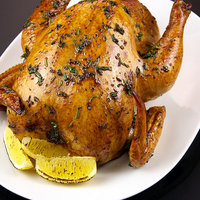When you are a working mom with three kids under 5 years old, you are busy! Anyone with a family to feed can relate. You may ask “how am I supposed to feed my family a healthy meal that they will actually eat?” It can be a challenge to know the “right foods” for yourself, or your family. Eating more animals and plants is the first step! When eating whole foods, you don’t have to worry about reading nutrition labels, and that can be a relief for most people. If you want to meet your goals for weight loss quickly, tracking your food intake will give you an edge.
I did the last blog post on reading nutrition labels which has helped a lot of people to better understand what to look for on food labels which can be overwhelming to most people. This has led to some more questions about keeping track of food intake in general, and tracking macronutrients. In my opinion, the less packaged foods you eat, the healthier the food usually is. Eating ingredients instead of “foods” is healthier because you are consuming whole foods that came from mother nature, not a factory. These whole foods are usually not packaged, so how do you know how much protein, carbs, and fats are in them? How do you know what one serving of the food looks like? This can be even more challenging, and there is a lot of subjectivity involved unless you get a food scale (which will help you reach your goals for weight loss a lot faster).
First let’s talk about fruits and veggies. Fruits and vegetables are always measured in raw form. It is important to take into account how big a serving size is. A serving of pineapple is just two slices, but a serving of asparagus is 5 spears. These serving sizes are not recommendations, they are just measurements. So you can look at how much protein, carbohydrates, and fats are in one serving of that food. Your metabolism may need more or less than one serving of a particular food based on your goals, physical activity levels, age, height, genetics, etc. This is why I like to think in terms of my recommended macronutrient levels when choosing how much of a food to consume. If I am trying to get in 23 grams of healthy carbs for lunch I have several options; I could eat one serving of sweet potato (remember this is without butter or oil), or I could one serving of grapes. I am not against cooking in olive oil, I do it all the time. If you want to meet your goals quickly, you will have to measure the amount of oil or butter you use, and track it into your daily food log. When you look at what a serving size it, it may say one medium (example: potato), but this is subjective. My opinion of what a medium potato is could be different than what you think is a medium potato. This is why I recommend measuring your portions on a food scale if you are serious about meeting your goals. This way you know exactly how many ounces you are consuming, and it will make you more aware of what a serving actually is.
Check out the nutrition facts charts: veggies nutrition facts fruits nutrition facts
For meats it can be a little more challenging. There are a lot of factors that come into play such as, how fatty is the meat, is it grass fed, or grain fed? Farm raised, factory raised, or wild caught? All of these factors will change the nutrient content of the food. The fat content will be more if the beef is grain fed (conventional), and it will be leaner if it is grass fed. Boneless, skinless, white meat on a chicken is a lot leaner than a chicken wing. A serving size of meat is something that will shock some of you as well. When you go to a restaurant and order a steak, it is usually a lot bigger than one serving. This is okay, if it fits into your goals, but it is something to be aware of. For example a serving (3 oz portion) of chicken breast has 7g of fat, but a serving of chicken wing has 16g of fat, that’s more than double, and the protein content of both foods is almost the same. I would guess that most of us consumer more that 3 oz of chicken when we eat it. If you are curious, you can weigh it, I bet you will be surprised. Once again, the serving size is just a measurement, not a recommendation! The nutrient content of each serving is what we want to look at. Consuming fat is not a horrible thing, your body needs fat to survive. It is important in normal body and hormone function. It will help you to keep track of the fat in foods so that you can meet your goals efficiently. Do not pay any attention to the recommended daily allowance. This is not important! It is based on a 2,000 calorie diet, and most americans do not need this amount of food! Most sedentary women need a lot less than this, and active people need a lot more.
Meats nutrition facts charts: Beef_Veal_Nutrition_Facts Pork_Lamb_Nutrition_Facts Chicken_Turkey_Nutrition_Facts

If you are serious about meeting your goals, I would recommend to start tracking your macronutrients. If you are not interested in tracking and measuring your food, that is okay, but knowing the nutrient content of the food that your family is consuming is important also. Are you guys eating more than one meal a day that is a “carbs only” meal? If so, this is not good. Balance is the key to eating flexibily and sustaining over time. Whether you want to lose weight, gain muscle, or just live a healthier lifestyle, it can be overwhelming at first. Taking the plunge and leaping into the world of nutrition can be a lot to take in at first. The more you understand, the easier it will be, and the more motivated you will be to make the changes for your family’s health.
Sarah Williams MS, ATC, SFN
www.thedietdoccincinnatieast.com
sarahwilliams@thedietdoc.com


